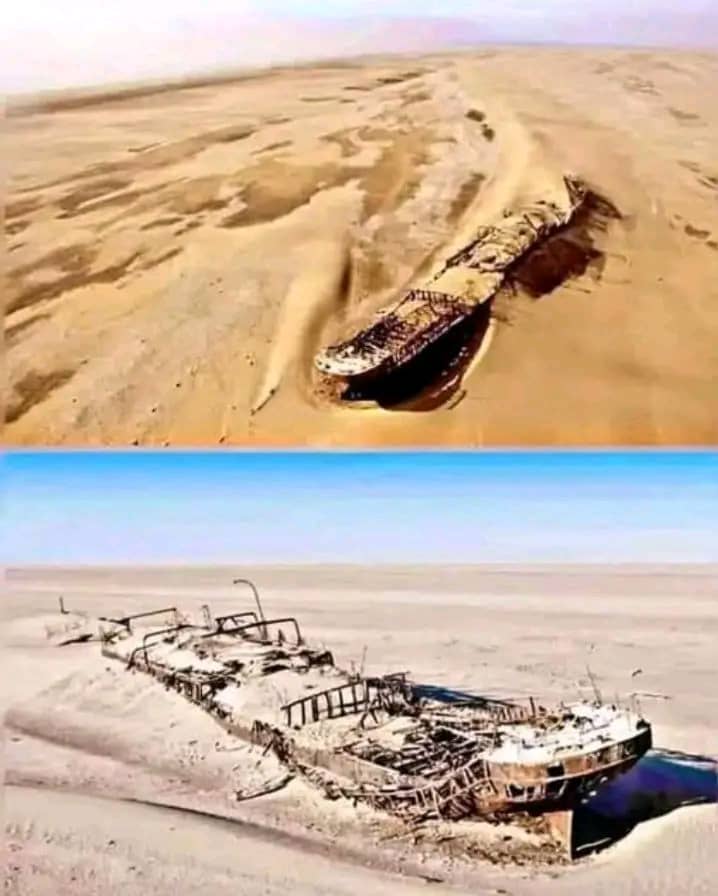By Burnett Munthali
In a remarkable turn of events that intertwines maritime history with modern archaeology, the remains of a Portuguese ship known as the Bom Jesus have been uncovered in the Namibian desert, shedding light on a centuries-old mystery.
This ship, which set sail from Lisbon in 1533, vanished from historical records, leaving its fate unknown for nearly five hundred years. Its rediscovery, during diamond mining operations near the coast, not only reveals the ship’s storied past but also unveils a treasure trove of valuable artifacts that paint a vivid picture of the age of exploration.
The significance of the Bom Jesus discovery lies not only in its historical context but also in the wealth of artifacts recovered from the site.
Among the items found were a substantial cache of Spanish and Portuguese gold coins, approximately two thousand German copper bulls, and over one hundred elephant tusks.
These findings provide crucial insights into the trade practices of the time and the interconnectedness of European and African economies during the Age of Discovery.
The estimated total value of these assets, at around $13 million, underscores the economic importance of such archaeological discoveries, offering a tangible link to our past.
The ship’s historical context adds further intrigue to this discovery.
The Bom Jesus embarked on its journey during a period marked by European exploration and colonization, where ships ventured into uncharted waters in search of new trade routes and resources.
Understanding the circumstances surrounding the Bom Jesus and its journey can illuminate the broader narrative of maritime exploration and the economic motivations that drove these expeditions.
The ship’s story is emblematic of the ambition and risk that characterized this era, providing a deeper appreciation for the human experience of exploration.
Furthermore, the discovery of the Bom Jesus has significant implications for archaeology and our understanding of maritime history.
Such findings help historians piece together the complex puzzle of the past, offering clues about shipbuilding techniques, trade networks, and the socio-economic dynamics of the time.
The artifacts recovered from the site can also contribute to a better understanding of the cultural exchanges that took place during this period, particularly the interactions between European explorers and the indigenous populations they encountered.
In addition to its historical and archaeological value, the find raises important discussions about heritage conservation and the ethical considerations surrounding treasure hunting.
The existence of valuable artifacts in such discoveries often leads to debates about ownership, preservation, and the responsibilities of those who uncover these treasures.
As we celebrate the excitement of uncovering the Bom Jesus, we must also advocate for responsible archaeological practices that prioritize the protection of cultural heritage and ensure that such discoveries are studied and preserved for future generations.
Moreover, the narrative of the Bom Jesus serves as a reminder of the enduring allure of maritime mysteries and the stories waiting to be uncovered beneath the sands of time.
As technological advancements continue to enhance our archaeological methods, we can expect more discoveries that challenge our understanding of history and expand our knowledge of past civilizations.
The fascination with shipwrecks and their treasures captivates the imagination, inviting both scholars and the public to engage with history in a tangible way.
In conclusion, the discovery of the Bom Jesus not only offers a glimpse into the past but also enriches our understanding of maritime history and the age of exploration.
The artifacts recovered from the ship are invaluable, providing insights into trade practices and cultural exchanges of the time.
As we celebrate this extraordinary find, let us also recognize the importance of ethical archaeology and the preservation of our shared heritage.
The Bom Jesus stands as a testament to the mysteries of history, reminding us that even after centuries, stories await discovery, ready to inform and inspire future generations.




